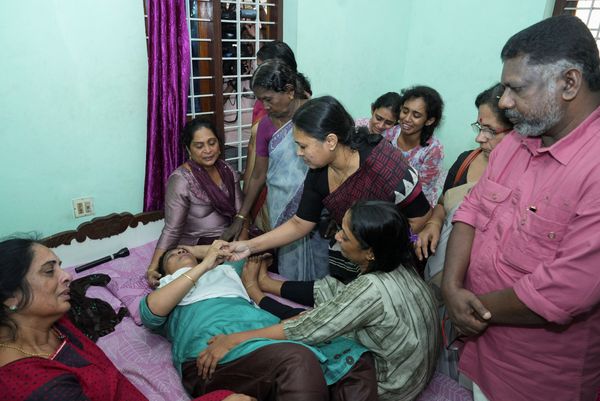Despite the State’s responsibility to support the country’s commitment to increase the share of installed capacity of electric power from non-fossil fuel sources to 40% by 2030 under the Intended Nationally Determined Contributions (INDCs), grid-connected rooftop solar power systems, one of the key projects identified to meet the target, is yet to attract many users. The low patronage is attributed to poor consumer awareness and lack of appropriate promotional campaigns. Less than 20,000 people have so far applied for rooftop projects in the State.
Though the national target is to achieve 100 gigawatts (GW) of solar power capacity by the end of 2022, of which 40 GW has to be generated from rooftop solar projects, the State will not be able to contribute even 62 megawatts (MW) of solar energy, given the existing situation. The field-level activities of the Kerala State Electricity Board (KSEB) and the Agency for New and Renewable Energy Research and Technology (ANERT) are still not up to expectations.
“There are consumers capable of installing high-power grid-connected rooftop solar systems, but our architectural designs are yet to evolve in such a way to accommodate the system. Owing to structural issues, financially capable people are disinclined and are still banking on the traditional inverter power backup system,” said V. George, a retired KSEB engineer. He said many were unaware of the existing subsidy schemes and modern solar technology to meet increased power consumption needs.
Though the State’s target is to generate 500 MW using rooftop solar plants, work is moving at a snail’s pace, with just one plant being installed for each constituency in the first phase. During the 2021-22 fiscal, only two such projects were completed in Kozhikode district. Not many applicants have come forward to experiment with the scheme owing to confusion and lack of knowledge about its possibilities.
“For a 1 kilowatt [KW] solar plant, at least 100 sq.ft. space will have to be kept ready for installation of panels that can cost up to ₹70,000. There should be options for receiving direct sunlight. Sadly, many rooftop panels in the State are fixed on slanted constructions or are covered with protective sheets,” said a senior official with ANERT. There was no provision at present to bear the cost of installing slanted roofs for solar panel erection, which discouraged many consumers, he added.
KSEB sources said the target to cover 42,250 households under one rooftop solar scheme readied in 2020 was yet to be met due to various technical reasons. Though some districts came up with supportive schemes to meet the target, grid-connected plants were not of much help, they added.
N. Biju, a senior solar technician associated with the government’s empanelled agencies for solar installation, said poor power generation during the monsoon season and the need to install more panels to meet the rising energy requirements were the reasons behind the lack of interest among consumers. “Many are also worried about the maintenance requirements, low profit for grid-connected panels, and the conversion of open terrace spaces for other purposes in the future,” he added.







